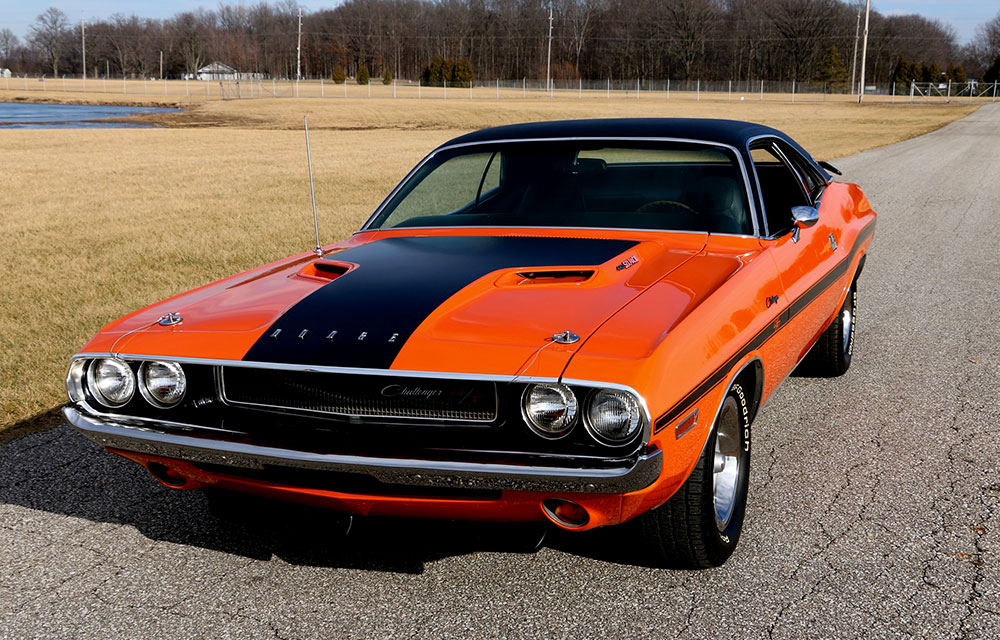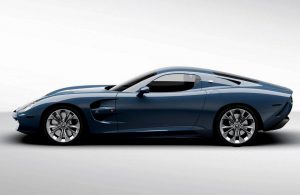Dodge Challenger obviously shares many features with the restyled 1970 Barracuda, though a closer look reveals some differences between the Chrysler’s two entries into the pony car market.
First is the Challenger’s larger stature. Through they are based on the same platform, the wheelbase for the Challenger was 110 inches, two inches longer than that of the Barracuda.

Consequently, the Challenger is a couple of inches wider and longer, though height and interior dimensions are identical between the two cars. Another distinguishing feature is the four-headlight setup of the Challenger as opposed to the two headlights on the Barracuda (though both would have four headlights in 1971).

Part of the success of the initial offering of the Challenger (it outsold all pony cars that year except leaders Mustang and Camaro) was the multitude of engine options available for the car. 1970 and 1971 would prove to be the only two years of real performance for the car, as tougher emission standards would require Dodge to take away many performance options by 1972. But in 1971, Challenger buyers could choose from nine different engine options. In fact the only engine Dodge offered that was not available for the Challenger that year was the smallest available, a 198 CID slant six-cylinder.
Instead, the standard engine for base model Challengers was a 225 CID slant six that produced 145 horsepower. This could be upgraded to a 318 CID V8 rated at 230 horsepower for $102 or a 275 horsepower 340 V8. Performance driven R/T (Road/Track) models came standard with a 4-barrel 383 CID V8 that produced 335 horsepower (a 2-barrel version of this engine also was available as an option for the base models). All Challenger models also could upgrade to two versions of a 440 CID V8, one the “Magnum” producing 375 horsepower and one the “Six-Pack” producing 390 horsepower. Topping them all was the 426 Street Hemi, which was rated at 425 horsepower.
By 1970, it was clear that while pony car fans desired power, many did not want to sacrifice luxury to fulfill their performance needs. The Firebird introduced its Espirit luxury model in 1970, and the Mustang Grande had first appeared in 1969. Dodge offered Special Edition trim for those that wanted to make their Challenger a little more luxurious. Appropriately branded the SE trim package, Dodge marketed the luxury models as “the little limousine.” The package could be added to both the base and R/T models, and included a vinyl roof, “honest-to-goodness real leather facings on the seats,” and an overhead console with door, fuel and seatbelt warning lights.

Total production was at an impressive 83,032 cars, a number the Challenger wouldn’t come close to repeating for the rest of its short life before being discontinued in 1974. Because of a multitude of options and impressive styling, the car was a hit upon introduction, but by that point the pony car class already had hit its pinnacle, so sales of Challenger throughout the ensuing three year-models would be somewhat disappointing.
General characteristics
Performance: Model 1970 Dodge Challenger R/T Six-Pack
Engine Used: 440ci/390hp
Zero to Sixty: 6.0 sec
Quarter Mile: 13.6 sec @ 104.0 mph
Share this:
- Click to share on Facebook (Opens in new window)
- Click to share on Twitter (Opens in new window)
- Click to print (Opens in new window)
- Click to share on LinkedIn (Opens in new window)
- Click to share on Reddit (Opens in new window)
- Click to share on Tumblr (Opens in new window)
- Click to share on Pinterest (Opens in new window)
- Click to share on Pocket (Opens in new window)
- Click to share on Telegram (Opens in new window)
- Click to share on WhatsApp (Opens in new window)





Pingback: Dodge Charger 1525bhp SpeedKore | Welcome to the 007 World!
Pingback: Dodge Challenger SRT Demon | Welcome to the 007 World!